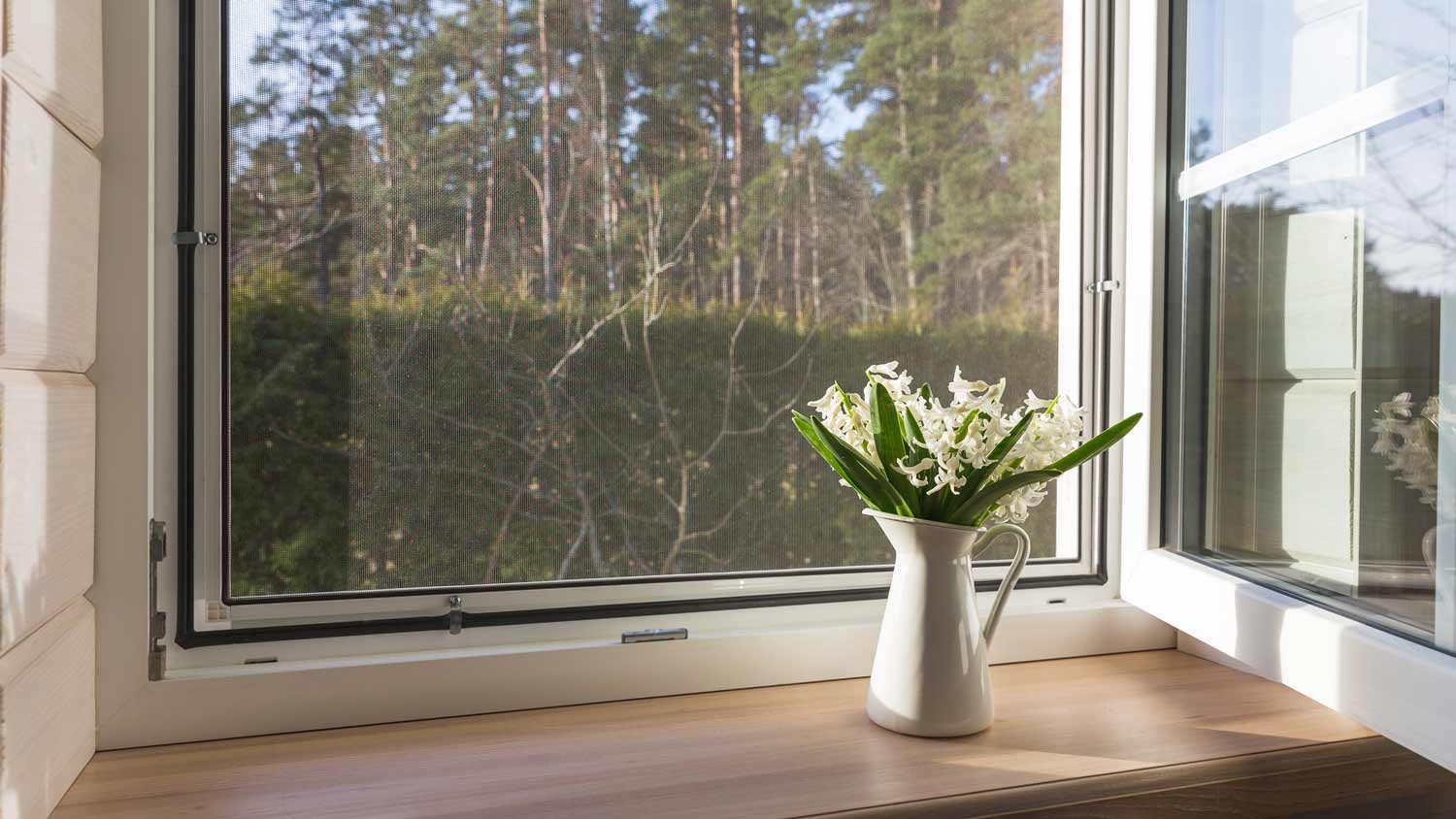Open Up the Possibilities: 5 Must-Know Tips for Choosing the Perfect Front Door
Find an entry that rings your bell


Maybe your front door is tired and worn. Or you’re remodeling your home and want to go in a completely new direction with the facade. When picking out this critical-to-curb appeal feature, factor in durability, budget, and appearance. Read on for a frame of reference; then, get your foot in the door and start researching options.
1. Choose a Format
First, decide whether you need only a door or a complete door system, including a pre-hung door in a frame with hinges, a lockset, sidelights, jambs, a threshold, and weatherstripping for your door. If your door surround is in good condition, a new door alone might suffice.
If you’re enlarging your door opening or your door surround is in poor condition, your local door installer should put in a new complete door system. To cut down on your exterior door cost, consider a door replacement kit, which includes a door pre-hung in a steel frame that attaches to your existing frame.
2. Pick a Material

Now, choose between wood, steel, aluminum, and fiberglass composite. Here’s a breakdown of these materials’ features.
Wood
Wood is beautiful, versatile, traditional, and high-end. Unfortunately, since it’s sensitive to moisture and sun, it can shrink, swell, and warp—especially if it’s solid wood. At least once a year, assess a solid wood door for damage.
For the highest quality, seek out thicker doors. Look for 1-3/8-inch panels rather than the 9/16- and 3/4-inch panels common with lower-end models.
Depending on your budget, you can opt for a door in softwood, such as pine and Western hemlock (around $600), or hardwood, like oak, cherry, walnut, mahogany, or maple ($2,000 to $4,000). You can also ask your local carpenter to build you a custom solid wood door.
To save money and reduce warping, though, consider a door sandwiching 1/16-inch-thick (or thicker) veneer skins over an engineered wood or steel core (up to $500).
Steel
Highly practical, steel is generally the least expensive option (ranging from about $500–$1,230) and durable, lasting at least 30 years. It won’t warp or crack and you can fix dents with an auto-body repair kit. However, since metal conducts heat and cold so well, steel isn’t ideal in extreme climates—it can be uncomfortable to touch a steel door on a very hot or cold day. To fix this problem, look for a thermal break separating the inside and outside door skins.
Most steel doors feature cavities filled with high-density foam insulation and a baked-on polyester finish, which will likely require resealing. They tend to come with hinges attached or pre-drilled with holes for attaching hinges.
For a quality door, seek out a 24-gauge (or thicker) steel skin and an inner frame of steel. Premium coatings include vinyl for weather resistance or stainable wood veneer (if the latter, make sure the wood grain design runs horizontally on the rails and vertically on the stiles). Avoid aluminum storm doors which can cause the finish on steel doors to peel (due to heat buildup).
Aluminum
For a more high-end metal option, consider aluminum for your front door ($100 to $2,000). As with steel, it features an insulation core coated in metal skin and lasts up to 20 years. The baked-on enamel finishes can be smooth or wood grain and won’t rust or require painting. As with steel doors, look for a thermal break.
Fiberglass Composite
Affordable and durable, these doors (ranging from about $250 to $2,000) feature molded fiberglass skins over a framework of wooden stiles and rails, with foam cores for insulation and an embossed wood-grain pattern finish. Ideal for harsh climates, they include long warranties. Just know that if your door is directly exposed to harsh weather, it might need resealing. Here too, look for a thermal break.
3. Select a Style
Make sure the design complements your home’s architecture. Choose an aesthetic consistent with your home’s overall style, considering a flat, solid door for a modern but avoiding a contemporary paneled door for a Tudor-style home. Here’s a rundown of door style options:
Flat, solid: Sleek and panel-free, these doors work well in modern and Mission-style homes. Opt for a narrow glass sidelight on the side with the knob or narrow sidelights on both sides.
Contemporary wood paneled: These doors are ideal in contemporary or modern homes or houses with wood paneling on their façades. For a more modern look, choose horizontal panels.
Traditional wood paneled: Choose these doors for more traditional homes, such as Colonials. Usually, they feature narrow symmetrical sidelights. To make them look more modern and less heavy, paint them white or use a light stain.
Fully glazed: All-glass doors are ideal for modern, contemporary, or coastal homes and flood entryways with natural light.
Part glazed: This more casual design works well with coastal or farmhouse-style homes. If your house is a Victorian, you might want to choose stained glass panels.
Double: These imposing entryways work for farmhouse, coastal, or transitional style homes with large porches.
4. Decide on Panes

Figure out how much glass to incorporate, considering light, security, privacy, and maintenance. Here are some tips to help you make this call:
Choose more glass, to flood a dark entryway with natural light. However, if you opt for more panes, reinforce the glass to prevent break-ins. Also choose beveled or frosted glass for privacy—especially if panes are at eye-level or below.
If your home has lots of large windows, think about a solid door to up the privacy factor.
The more glass, the more maintenance; you’ll need to clean the panes often, so they remain crystal-clear.
Decide on the style of the windows, whether oval, grilled, or arched. As with the door design, they should complement your home’s aesthetic.
5. Evaluate the Nuts and Bolts
Look for complete, multi-lock entry systems. Also seek out doors with high-quality hardware, including cylinders, handles, and hinges. Then check to make sure the weatherstripping seals correctly and the threshold interlocks with the bottom of the door.





- 5 Ways To Make Your Front Door Energy Efficient
- How to Insulate a Door
- How to Fix a Gap Between a Storm Door and Frame to Seal Your Home
- 8 Tips for Stylishly Updating Interior Doors
- How to Fix a Door That Sticks: 5 Different Methods
- Fiberglass vs. Wood Door: Which Is Best for Your Home?
- How to Measure for a Storm Door to Get the Perfect Fit
- Why Water is Leaking Through Your Sliding Glass Door and How to Stop It
- How to Secure a Door Without a Lock While You Wait for a Locksmith
- Do I Need a Storm Door? What to Consider















